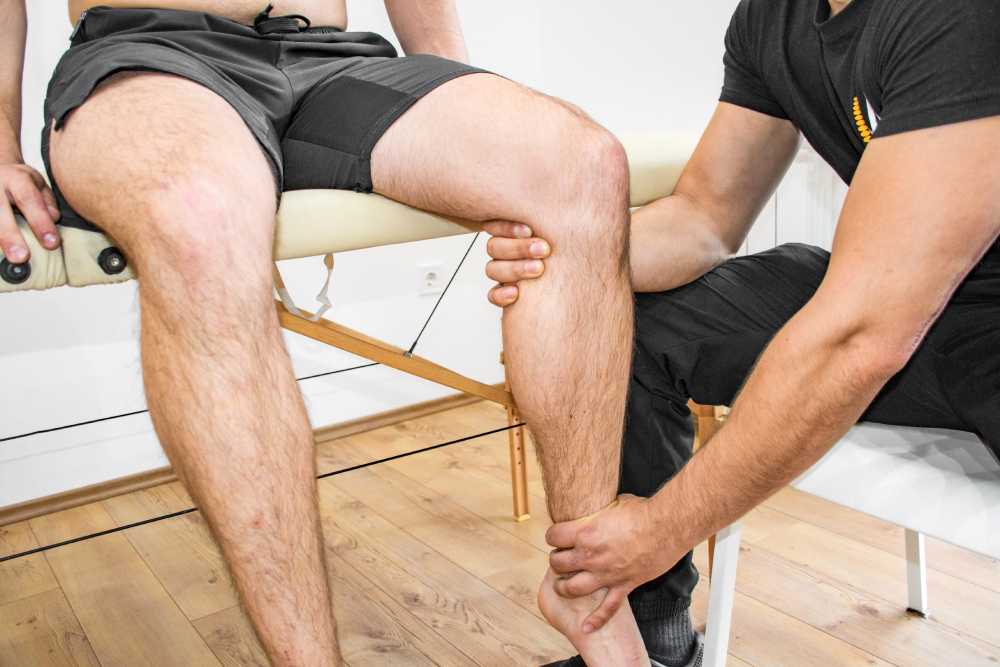Introduction:
However, many individuals struggle with poor posture due to factors such as sedentary lifestyles, improper ergonomics, and muscular imbalances. Physiotherapy offers effective strategies and interventions to address posture-related issues and help individuals achieve optimal alignment. At Next Step Physiotherapy Edmonton, our team of skilled physiotherapists specializes in improving posture through targeted exercises, manual therapy techniques, and education. This article explores the ways in which physiotherapy can aid in improving posture and enhancing musculoskeletal health.
Understanding Posture and Its Impact:
Posture refers to the alignment of the body's various parts in relation to each other and to gravity. Good posture involves maintaining a neutral spine, balanced distribution of weight, and proper alignment of the head, shoulders, hips, and feet. Poor posture, on the other hand, can lead to a variety of musculoskeletal issues, including neck pain, back pain, headaches, and joint dysfunction.
Factors Contributing to Poor Posture:
Several factors can contribute to poor posture, including:
Sedentary Lifestyle: Prolonged sitting or standing in improper positions can lead to muscle imbalances and postural deviations.
Muscle Weakness and Tightness: Weakness in certain muscle groups and tightness in others can pull the body out of alignment, resulting in poor posture.
Imbalanced Movement Patterns: Repetitive movements or activities that favor one side of the body can lead to imbalanced muscle development and postural asymmetries.
Improper Ergonomics: Poor workplace ergonomics, such as improper chair height or workstation setup, can contribute to postural strain and discomfort.
Structural Abnormalities: Certain structural abnormalities or underlying medical conditions can affect posture and predispose individuals to postural issues.
How Physiotherapy Can Help Improve Posture:
Comprehensive Assessment:
The first step in improving posture through physiotherapy is a comprehensive assessment conducted by a skilled physiotherapist at Next Step Physiotherapy. This assessment may include evaluating posture in sitting, standing, and lying positions, as well as assessing muscle strength, flexibility, and joint mobility.
Identification of Postural Deviations:
Physiotherapists identify specific postural deviations and imbalances that may be contributing to poor posture. Common postural issues include forward head posture, rounded shoulders, excessive thoracic kyphosis, and anterior pelvic tilt.
Customized Treatment Plan:
Based on the assessment findings, physiotherapists develop a customized treatment plan tailored to address the individual's unique needs and goals. The treatment plan may include a combination of exercises, manual therapy techniques, and ergonomic recommendations.
Postural Strengthening Exercises:
Physiotherapists prescribe specific exercises to strengthen muscles that support good posture, including the core, back extensors, scapular stabilizers, and hip muscles. These exercises help improve muscle balance and alignment, and better posture.
Stretching and Mobility Exercises:
Tight muscles can contribute to postural deviations and discomfort. Physiotherapists incorporate stretching and mobility exercises to address muscle tightness and improve joint range of motion. Common areas targeted include the chest, shoulders, hip flexors, and hamstrings.
Manual Therapy Techniques:
Manual therapy techniques, such as joint mobilizations, soft tissue mobilization, and myofascial release, may be used to address restrictions and tension in muscles and joints. These techniques help improve joint alignment and mobility, facilitating better posture.
Postural Education and Awareness:
Educating individuals about the importance of good posture and providing strategies for maintaining proper alignment throughout daily activities is a key aspect of physiotherapy. Physiotherapists teach postural awareness techniques, ergonomic principles, and strategies for optimizing workplace ergonomics.
Functional Movement Training:
Functional movement training focuses on integrating proper movement patterns and postural alignment into functional activities and tasks. Physiotherapists guide individuals through movements that mimic real-life activities, reinforcing good posture and alignment.
Progressive Rehabilitation:
Posture improvement is a gradual process that requires consistent effort and commitment. Physiotherapists at Next Step Physiotherapy provide progressive rehabilitation programs tailored to each individual's needs, gradually increasing the intensity and complexity of exercises and interventions.
Home Exercise Program:
To support ongoing progress and maintenance of good posture, physiotherapists prescribe a home exercise program consisting of exercises and stretches tailored to the individual's needs. Consistent adherence to the home exercise program is essential for long-term postural improvement.
Benefits of Improving Posture through Physiotherapy:
Pain Relief: Proper alignment and improved posture can alleviate strain on muscles and joints, reducing pain and discomfort, particularly in the neck, shoulders, and back.
Prevention of Injuries: Good posture reduces the risk of musculoskeletal injuries by promoting optimal alignment and reducing stress on the body's structures during movement and activities.
Enhanced Mobility: Improved posture leads to better joint mobility and range of motion, allowing for more efficient movement patterns and decreased stiffness.
Increased Energy and Vitality: Maintaining good posture throughout the day can increase energy levels and reduce fatigue by optimizing breathing, circulation, and overall body mechanics.
Improved Confidence: Good posture conveys confidence and poise, positively impacting self-esteem and body image.
Enhanced Performance: Whether in sports, work, or daily activities, proper posture enhances performance by optimizing biomechanics, stability, and efficiency of movement.
Long-Term Musculoskeletal Health: Investing in improving posture through physiotherapy promotes long-term musculoskeletal health, reducing the risk of degenerative changes and chronic pain conditions associated with poor posture.
Conclusion:
Physiotherapy plays a vital role in improving posture and promoting musculoskeletal health. Through a combination of targeted exercises, manual therapy techniques, ergonomic recommendations, and postural education, individuals can achieve optimal alignment and function. At Next Step Physiotherapy in Edmonton, our experienced physiotherapists are dedicated to helping individuals overcome postural issues and achieve lasting improvements in posture. If you're struggling with poor posture or experiencing discomfort related to postural deviations, consider consulting with our team to explore how physiotherapy can help you straighten up and move with greater ease and confidence.
#physiotherapyedmonton #edmontonphysiotherapy #empoweryourhealth #physiotherapyworks #physiotherapynearme #physiotherapy #physicaltherapyedmonton #physicaltherapynearme #physicaltherapy #nextstepphysiotherapyedmonton #physiotherapistedmonton #physicaltherapist #physiotherapyclinic #physioclinicedmonton


No comments yet